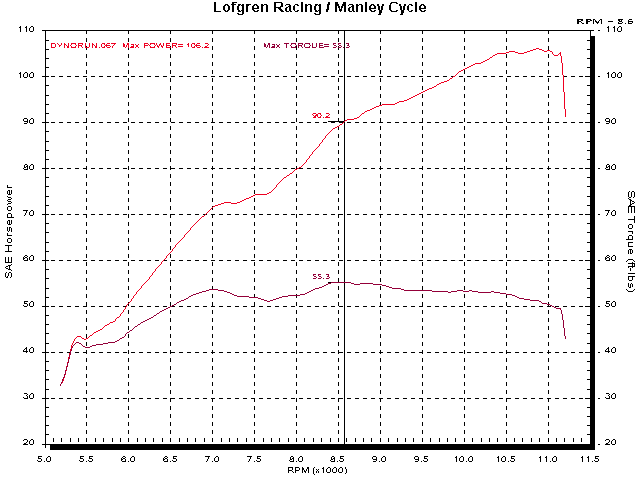
The first of the current ‘Desmoquattro’ series was a
748, which appeared in 1986. It was built on a 750 (748cc) crankcase and the
frame was actually made up of pieces cut from the air-cooled endurance bike
frame.
Michael Feldman already has a large displacement Ducati
(M984) with a limited RPM range. He bought the 748 because he wanted a different
version of the concept.
When it came time to consider which modifications to make
he decided that the result should retain the same characteristics that it began
with; smooth, high revving power with the displacement at 748ccs.
The way to accomplish that is through breathing and
compression.
The breathing part is already there, the valve spacing for
all of the 4-valve engines was first layed-out for an 88mm X 61.5mm engine.
In fact, the 748 could take the same 37mm inlet and 31mm
exhaust valve combination that was used on the 955 Superbike engines.
There are some practical reasons why we didn’t go that
large.
1)
That would require sinking the inlet valves quite a bit, which increases
the combustion chamber volume.
2)
It would require installing larger inlet valve seats.
3)
The lift of the stock cams is, really, not enough to properly utilize a
valve of that size.
I’ve done several engines with 35mm inlets and 30mm
exhausts, so I have a reasonable idea of what flow numbers to expect.
The real problem was, how to get increased compression.
Though I haven’t measured the 748 SP pistons I’ve seen SP2 pistons, as well
as 748SP pistons and they don’t offer an appreciable increase in compression
ratio. The worst part about using the SP pistons is that, since we're using
Strada cams, we don't need the valve clearance cut-aways in the pistons.
In addition to that, the ‘big valve’ head-work would
increase the combustion chamber volume lowering the CR even more.
There is a school of thought that holds that the output of
an engine is limited by the ports (I believe that it is fairly well accepted.)
Of course, a smaller displacement engine would have to rev higher to accomplish
that, (and that creates more friction losses.)
If that is true, I should have expected a bit over 100HP.
Even when one of my usually accurate engine programs predicted 108 HP I wasn't
sure.
The reality was; I didn't dare predict that. Even though
the compression is very good, I couldn't make myself expect much over 100HP.
(At this point, I won’t say how we got the compression, but we got it! I can't tell everything.) This was the previous comment on the subject of compression ratio.
Now, I'll divulge that I had longer rods made, which pushed the piston out of the bore by 2.25mm (1/2 the difference in stroke between 916 and 748.)
When I started to look at the pistons I discovered that the ring placement of both 916 and 748 pistons was the same relative to the wrist-pin. Because of that I could safely lower the deck area of the 748 pistons to the same distance above the top ring. That allowed the me to push the piston out of the bore by 1/2 the stroke difference. That's 66 minus 61.5 (4.5mm) divided by 2, which is 2.25mm! (748 and 916 rods are the same part, therefore they are the same length.)
Then I had to machine the piston crown and the valve cut-aways
which left us with a compression ratio around 13:1. With careful mapping of the
ignition timing we had a bike that would run on 92 octane pump gas.
The stock piston weight is 443 grams while the pistons we
used weighed 408 grams when they were finished.
The Carrillo rods weighed 410 grams, the stock rods weigh
512 grams.
When the crank came back from Falicon the counter-weight
O.D. was smaller than when it left, and there was only the smallest balancing
hole in it. Apparently they had turned down the O.D. until it was very close to
the correct weight for proper balance. The result is a very smooth engine.
Now that we had the compression we wanted, and the airflow
we expected, all I had to do was assemble it.
In the US the only models we get have the 'Strada' cams.
So, that is what we used.
The question of cam timing came up (when it was time to
‘time’ the cams) the solution was stock
cam timing.
That doesn’t mean that I didn’t check it, like it does
when customers say that. It means that the cams have been adjusted to the stock
timing specifications, which are well suited to this task.
Until I can take the time to run further cam timing tests,
the stock cam timing figures will do just fine.
Below is a graph after the chip development.
